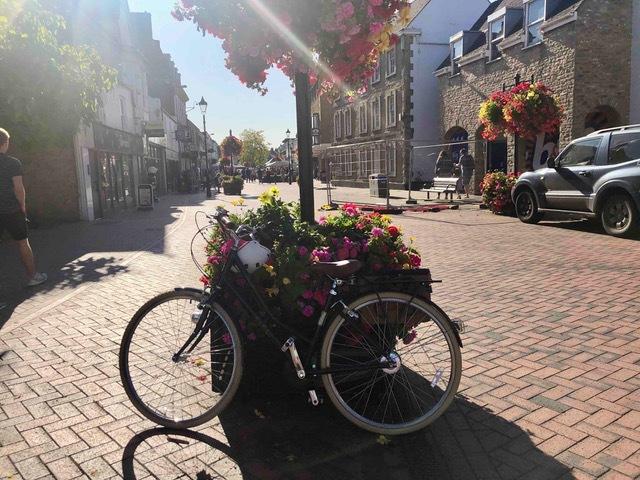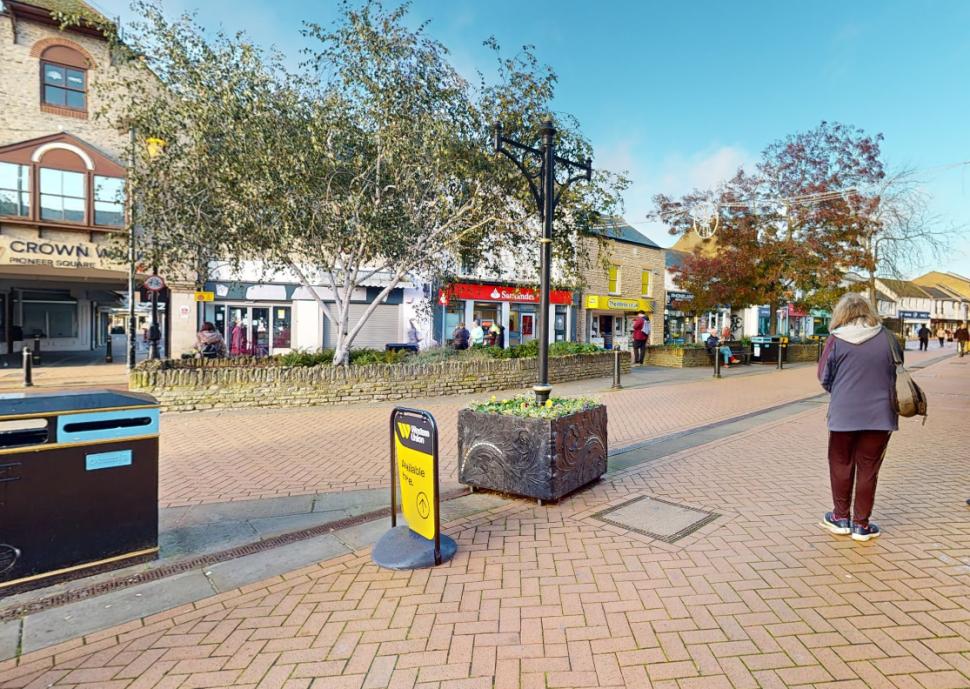Shopping
Cyclists to be allowed to ride on popular shopping street pedestrianised for 30 years as police say it will “split opinion”… and Conservative councillor concerned about “abuse by vehicles”

A shopping street that has banned cycling for three decades will be opened up to those riding bicycles, a cycling campaign group arguing that the move could be a “great boost to the struggling high street” with “space for all users to circulate in safety”. However, the decision concerning Bicester’s Sheep Street, in Oxfordshire, expected to be approved tomorrow, has not been universally popular, Thames Valley Police weighing in with the comment that the proposal will “split public opinion” and Conservative councillors expressing concerns.
The Oxford Mail reported that Oxfordshire County Council’s transport chief Andrew Gant has been recommended to approve an Experimental Traffic Order (ETO) to allow cyclists to ride in the pedestrianised street, the order lasting six months before a decision on whether to make the scheme permanent is made.
Earlier this month, the Chair of Bicester Bike Users Group, Catherine Hickman, told road.cc that throughout the week footfall can be “very light” and there is “ample” room for cyclists and pedestrians to co-exist safely. Furthermore, the current situation, with enforcement of the cycling ban largely absent, means “the least responsible cyclists” cycle along Sheep Street regardless, the ban only serving to deter people who would otherwise access the route safely.
Hickman argued allowing cyclists access could be a “great boost to the struggling high street” and questioned the pedestrian safety argument considering some critics “seem almost completely unconcerned” by heavy goods vehicles, vans and car drivers regularly using the route for deliveries.
Commenting on the likely introduction of cyclist access, a spokesperson for the Bicester Bike Users Group said it is “hard to know how well it will work” unless the town “give it a go” and added that they believe “many of the concerns raised will prove unfounded”.
“This is probably one of those proposals that will split public opinion”
Another organisation to comment on the situation was Thames Valley Police, the force calling the decision a “tricky one” but that it appears the council is “only trying to formalise what is the norm”.
“Allowing this could set a precedent for other similar locations. Dare I suggest Queen Street in Oxford. This location has been the source of misuse by cyclists for many decades despite the restriction and also a burden on use,” a spokesperson said. “This is probably one of those proposals that will split public opinion.”
A Conservative councillor has been outspoken against the lifting of the cycling ban, saying she is “disappointed but not surprised” by the expected decision of the Liberal Democrat-led council but which no party has had outright control over since 2013. Donna Ward also claimed the decision is being made “despite 65 per cent of those who have responded being against the ETO”.
“I have concerns that many issues need addressing before this can be considered sufficiently. None of the concerns raised have been answered,” she said.
“These included Bicester Friday market and events, the current abuse of Sheep Street by vehicles which is not being enforced by the county council, how will cyclists safely enter and exit Sheep Street given the market square is one way and could require a turn in the middle to enter. There are also concerns raised by Unlimited Oxfordshire who represent our most vulnerable residents.”
The fact HGVs, vans and other drivers regularly access the pedestrianised street to make deliveries was raised during the past weeks, Bicester Bike Users Group pointing out that some who oppose the scheme have not raised the issue of delivery vehicles risking safety.
Ford’s fellow Tory councillor Michael Waine had claimed that allowing cyclists to use the route would mean being unable to “safeguard pedestrians and other users, especially on busy days when the street is full of people”.
“I am totally opposed to the proposal to allow two-way cycling in Sheep Street 24 hours a day, seven days a week,” he said. “Sheep Street has been a pedestrianised area for 30 years or more and has become an area used for markets, street cafes, exhibitions, and other events.”
However, Hickman suggested those opposed to the scheme had their “priorities all wrong”.
“Cycling responsibly along the street would be relatively low risk, particularly as there is space, and it would provide a safe route given that there are no alternative routes that actually have safe cycle provision. It’s also worth mentioning that Sheep Street is part of NCN route 51,” she said, before pointing out those who are more likely to cycle dangerously currently ignore the ban anyway due to a lack of enforcement.
The move to open up more town centre areas to cyclists goes against the growing number of councils that we have reported on introducing bans on cycling in recent times, often using a Public Spaces Protection Order (PSPO).
Perhaps the most prominent example is that of North Lincolnshire Council, who stated it had “escalated” and “intensified” its “war on cycling menaces” by implementing a complete ban on riding a bike in pedestrianised zones, as part of a wider crackdown on anti-social behaviour.
In Grimsby, cyclists have been fined £100 for doing so, one rider ordered to pay £1,100 after refusing the fixed-penalty notice.
Coventry has introduced a city centre e-bike ban in a bid to tackle “reckless” and anti-social behaviour, West Midlands Walking and Cycling Commissioner Adam Tranter saying it will only “discourage cycling and penalise responsible cyclists”.
Southend Council has launched a consultation to impose stricter ‘no cycling’ rules in the town centre that could see cyclists being ordered to pay £100 for riding on its high street, the local authority’s deputy leader saying that “fining is one of the few options left”.
However, Worcester City Council this month opted against extending a controversial PSPO brought in with the stated aim of tackling dangerous cycling in the city centre, but which drew criticism from campaigners who said it acted as a “psychological barrier” to more people using bicycles.
“I was never convinced people feeding gulls, aggressive begging and dangerous cyclists were the big issues facing Worcester,” Cllr Matt Lamb, a Labour Party representative, said of the decision. “I thought it was more a bit of political theatre.”
Green Party councillor Tom Piotrowski suggested the PSPO had been “more about culture wars than what we want for the city”.














